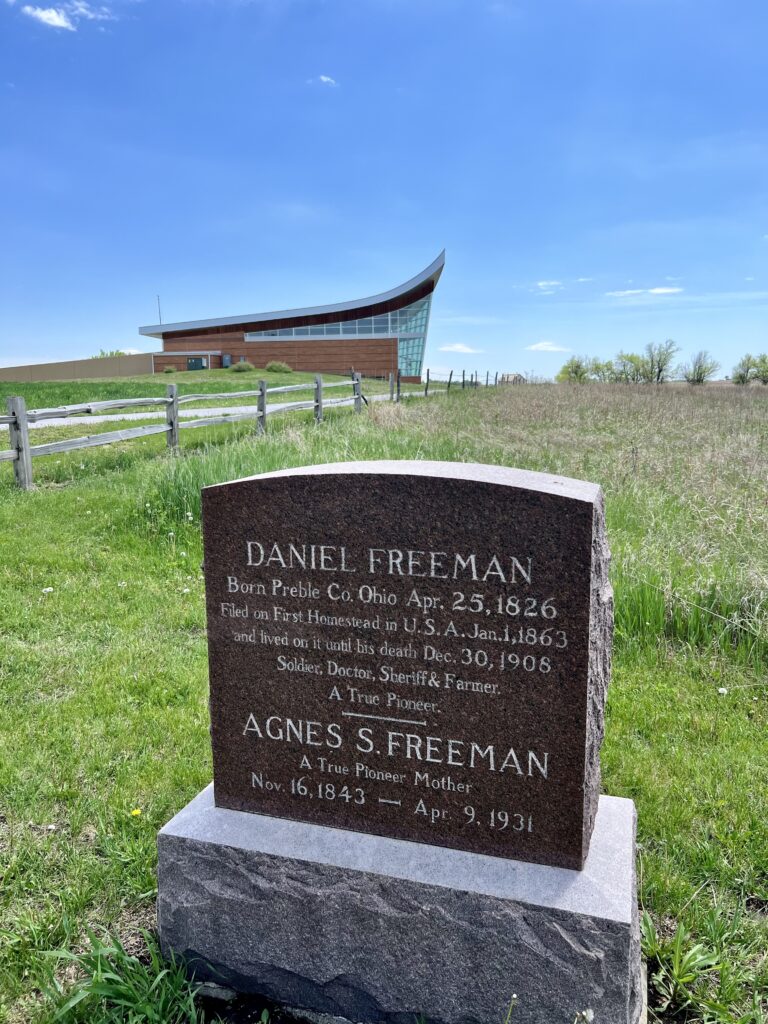Homestead National Monument preserves a unique piece of American history. Celebrating the Homestead Act of 1862, the monument is located in Nebraska, on the first 160 acre plot of land claimed under the act. The land was claimed by Daniel Freeman, a coincidence that surely would have made Thomas Jefferson smile. Jefferson firmly believed that a society primarily focused on agriculture was the surest way to preserve freedom. “Whenever there are in any country uncultivated lands and unemployed poor, it is clear that the laws of property have been so far extended as to violate natural right. The earth is given as a common stock for man to labor and live on. The small landowners are the most precious part of a state.” While Jefferson’s economic views lost out to Hamilton’s, he was able to lay the groundwork for the Homestead Act with the Louisiana Purchase. A significant portion of the land acquired in the Louisiana Purchase was ultimately given away under the Homestead Act. Eventually 270 million acres of land was settled across 30 states, more than 10% of all the land in America. In the process transforming America forever.


Visiting Homestead National Monument
I’ve had this one on my to do list for a while now, and it didn’t disappoint. The primary focus of the monument is the Heritage Center, which has museum exhibits covering all aspects of the Homestead Act. From the day to day life of homesteaders to the economic impacts of the Homestead Act, if there’s a particular topic you’re interested in, chances are it’s covered. Most of the exhibits are also interactive, allowing you to dig deeper into particular aspects that interest you. It took me roughly an hour and a half to see everything inside the Heritage Center, including the half hour introductory video they show. If you’re going at a brisk pace you could see pretty much everything in 30 to 45 minutes.
Once you’re done in the Heritage Center, there are 3 miles of hiking trails throughout the grounds. The land has been restored to what it would have looked like in the 1850’s, before it was ever farmed. The restored prairie is now home to plenty of wildlife, and an easy walk along the trails is very relaxing.
The passage of the Homestead Act was one of the most transformative events in U.S. history, and the monument does a fine job of showcasing that history. Everyone can learn something by visiting the Homestead National Monument, but it typically draws less than 100,000 visitors per year. For anyone who is interested, the monument is only an hour detour off of Interstate 80. It’s 45 miles south of Lincoln, so it’s actually pretty easy to get to. If this interests you, but never plan on stepping foot in Nebraska, check out the monument’s NPS site. Not as good as a visit to Homestead National Monument, but they have lots of excellent information if you wanted to learn more.
https://www.nps.gov/articles/the-homestead-act.htm

That’s really interesting. I had never heard of this place. Wish they would still give out 140 acres for free. 😃
The government still owns 640 million acres, more than 25% of all the land in the U.S., but what’s left wasn’t conducive to homesteading.
Looks like he’s packing a gun, a rifle, a knife, and a hatchet. Is that right?
Ya, that’s what I see. I’m sure there’s an additional cache of weapons back at the cabin as well.
As I understand it, the second largest landowner in the U.S. is the Catellus Corporation. It is a conglomeration of railroad companies (primarily the Santa Fe) who were given ample property on either side of their cross country routes (I believe it was a mile on each side!) and much of that land is still owned by Catellus.
Do they teach history at bond trading school? You’re quite the historian, Zach!
I’m not familiar with Catellus, will have to check that out. The total amount of land given to U.S. railroads was roughly 180 million acres, 10% of all the land in the contiguous United States. No bond trading school, but that should really be a thing haha.